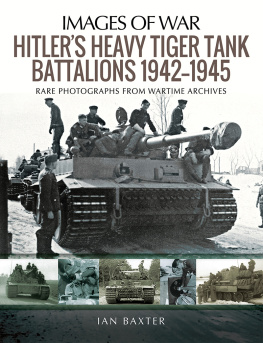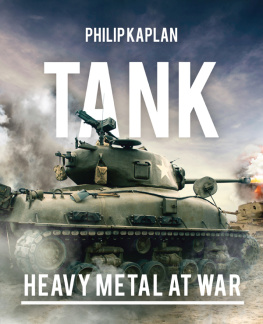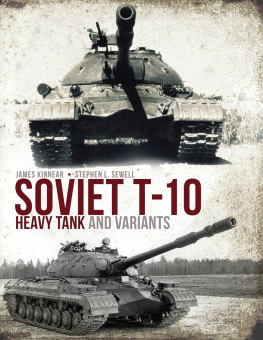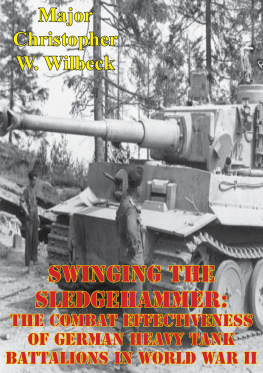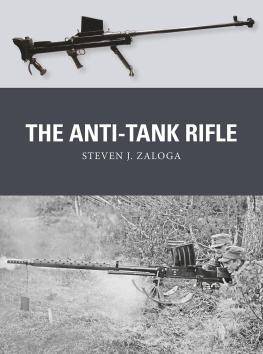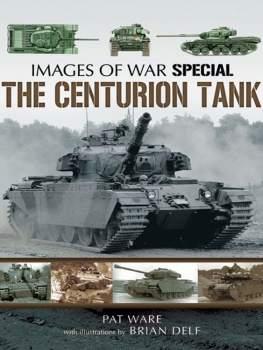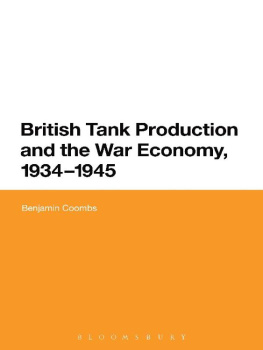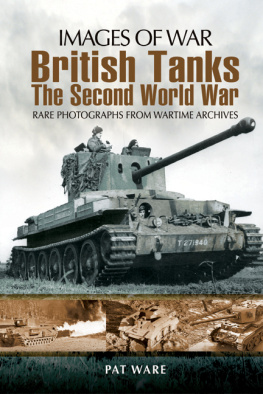John B. Carpenter - Features of the TOG British Heavy Tank of World War II: The best technologies of world wars
Here you can read online John B. Carpenter - Features of the TOG British Heavy Tank of World War II: The best technologies of world wars full text of the book (entire story) in english for free. Download pdf and epub, get meaning, cover and reviews about this ebook. year: 2020, genre: Science fiction. Description of the work, (preface) as well as reviews are available. Best literature library LitArk.com created for fans of good reading and offers a wide selection of genres:
Romance novel
Science fiction
Adventure
Detective
Science
History
Home and family
Prose
Art
Politics
Computer
Non-fiction
Religion
Business
Children
Humor
Choose a favorite category and find really read worthwhile books. Enjoy immersion in the world of imagination, feel the emotions of the characters or learn something new for yourself, make an fascinating discovery.

- Book:Features of the TOG British Heavy Tank of World War II: The best technologies of world wars
- Author:
- Genre:
- Year:2020
- Rating:3 / 5
- Favourites:Add to favourites
- Your mark:
- 60
- 1
- 2
- 3
- 4
- 5
Features of the TOG British Heavy Tank of World War II: The best technologies of world wars: summary, description and annotation
We offer to read an annotation, description, summary or preface (depends on what the author of the book "Features of the TOG British Heavy Tank of World War II: The best technologies of world wars" wrote himself). If you haven't found the necessary information about the book — write in the comments, we will try to find it.
John B. Carpenter: author's other books
Who wrote Features of the TOG British Heavy Tank of World War II: The best technologies of world wars? Find out the surname, the name of the author of the book and a list of all author's works by series.
Features of the TOG British Heavy Tank of World War II: The best technologies of world wars — read online for free the complete book (whole text) full work
Below is the text of the book, divided by pages. System saving the place of the last page read, allows you to conveniently read the book "Features of the TOG British Heavy Tank of World War II: The best technologies of world wars" online for free, without having to search again every time where you left off. Put a bookmark, and you can go to the page where you finished reading at any time.
Font size:
Interval:
Bookmark:
Features of the TOG British Heavy Tank of World War II
The best technologies of world wars
John B. Carpenter
All rights reserved
John Carpenter , 2017
Camea Publish, 2018
Cover design by Dennis Westingen
Fotos by:
Gina Smith
Tanya Dolski
Sam Sanderson
Bill Carson
Experienced heavy tank TOG, the development of which began in England in the autumn of 1939, was a kind of reincarnation of the projects of combat vehicles of the First World War.
The tank was the brainchild of famous British military specialists and designers, among who were engineer Harry Ricardo, General Ernest Swinton and designer William Tritton. All of them played a big role in the formation of British tank construction in the early 20th century. Perhaps the outdated views of the creators of the heavy tank TOG were the first reason that the resulting design for the Second World War looked completely archaic.
Content:
Unfortunately, English is not the author's native language. All errors and inaccuracies in the book remain on his conscience.
Introduction

We all know perfectly well that the era of the twenties and thirties years of the twentieth century in the history of tank building was marked by the appearance of the most incredible armored monsters, which it is difficult to call tanks. Evil tongues say that the most barbarous and inhuman experiments in the field of armored engineering were carried out in the interwar France (and there is a significant part of the truth in this), but the British did not lag behind the French. Although it would seem that Britain, which was the homeland of tanks as such, produced several more than sane models that were prototypes for creating tanks in other countries during this period-it is enough to recall the famous Vickers Mk E "six-ton", the direct progenitor of the Soviet T-26 and lots of cars on its base.
The acute financial crisis in the UK in the early twentieth century was the reason that in the RTC (Royal Tank Corps, Royal Tank Corps) there were no heavy tanks. The situation began to change only in the late 1930s. The presence of such machines, which would have a thick reservation and powerful weapons capable of penetrating any enemy defenses, was caused by fears of a new "trench war", the specter of which stirred British staff officers after the end of the first world war. Naturally, given the circumstances, officials from the military department put forward appropriate requirements to designers.
Even before the start of World War II it became clear that the multi-tower scheme had ceased to be relevant. Tanks like the T-35 or A1E1 with a large number of trunks had a delicate reservation, and therefore could not play the role of "infantry". At the same time to create a fundamentally new machine to allocate time and spend money absolutely do not want. Hence, the conclusion was drawn that the Tank Corps needs an analogue of Mk.VIII "Liberty", but executed at a new level.
History of a heavy tank TOG

The requirements for a new tank for use in combat operations in Europe were discussed in July 1939. In the discussion, the British Minister of Supply and Sir Albert Stern, who headed the Supply Department for tanks during the First World War, directly participated. Ser Alberta Stern in the British tank building was a legend. Being the Secretary of the First in the World Committee of the Land Ships, it was he who in many ways organized the serial production of tanks in the UK. Sir Albert had not only an extremely high authority, but even more conceit, which in this work played a negative role.

Probably, the supply minister and Sir Albert supposed that the blow to the German army would be inflicted by the "Maginot Line", which would enable us to withstand a long siege. And it is here that the experience of older comrades is useful. As a result, on September 5, Sir Albert Stern was asked to form a committee and work out with the tank specialists the requirements for a heavy tank. The committee included Sir J. Tennyson D'Enquourt, Major Walter Wilson, Mr. Ricardo and General Swinton. In addition, Stern made an offer to Sir William Triton from Foster to help develop a new tank. In 1914-1918, these people directly participated in the design and construction of "rhombuses", the running gear of which was best suited for overcoming field obstacles and ditches. Given that the committee included veterans of tank building he was given an informal nickname The Old Gang (Old Banda, TOG).
Soon the committee asked the General Staff of the British Army to issue a heavy tank of demands in response to what he was invited to visit France to get acquainted with the design of the Allied tanks. In addition, it was supposed to learn the opinion of the officers of the headquarters of the Expeditionary Force of Great Britain. Obviously, the military's desire with the committee's opinion about the form of the new heavy tank was not much different. As an example, could serve as a French tank B1bis, which possessed all the necessary qualities, except for strong weapons. However, the layout of B1bis repeated those decisions of later "rhombuses", in the front part of the body of which the installation of a powerful gun was planned. As a result, the orthodoxy tank building decided to combine the new and the old, thus outstripping its allies.


TOG 1 with a tower from the Matilda tank. On the back of the board, you can see the inclinometer
In October 1939, the committee officially named the Committee for the Development of a Special Machine of the Ministry of Supply finally received a full-fledged technical assignment. The design of the new heavy tank provided for an elongated hull. As a propulsor, it was intended to use caterpillars, completely enclosing the body along the length and height. The hull reservation had to withstand the impact of 91-meter (100 yards) rounds of 37-mm anti-tank guns and 105-mm field guns. Armament of the tank was conventionally divided into two types: a gun installed in the front sheet of the hull and intended to destroy field fortifications; two 40 mm caliber guns and two BESA machine guns of 7.92 mm caliber installed in side sponsors intended for "stripping" enemy trenches. The speed of the tank was limited to 8 km / h (5 mph), with a power reserve of not more than 82 km (50 miles). Such low driving performance was due to the concept of the "infantry tank" - the military believed that a machine of this type should not "run away" from the infantry. To deliver tanks to the front edge of the front, we wanted to use rail transport.
Wanting to be reinsured, the military department issued TTP to two companies - Foster and Harland & Wolf. The committee worked on the side of Foster. The abbreviation TOG was decided to apply to the tank, although the designation TOG1 (TOG No. 1) was also used. In addition, the technical assignment provided for the use of a diesel engine.
Thus, the sketch design of the heavy tank TOG, presented in December 1939, combined advanced technical ideas and obvious anachronisms. The "old gang" has developed a multi-roller chassis that has a rigid suspension without elastic elements. This simplified the design and reduced the mass, but despite this, the design mass of the tank without sponsors, weapons, ammunition amounted to 50 tons, and a diesel engine of the appropriate power has not yet been created. Instead, it was proposed to use the Pacsman-Ricardo 12-cylinder V-shaped diesel (450 hp) boosted to 600 hp. Under the project, the crew of the tank consisted of 8 people: the commander of the car, the driver, the artilleryman and the loader of the front gun, and four tankmen in the sponsors.
Next pageFont size:
Interval:
Bookmark:
Similar books «Features of the TOG British Heavy Tank of World War II: The best technologies of world wars»
Look at similar books to Features of the TOG British Heavy Tank of World War II: The best technologies of world wars. We have selected literature similar in name and meaning in the hope of providing readers with more options to find new, interesting, not yet read works.
Discussion, reviews of the book Features of the TOG British Heavy Tank of World War II: The best technologies of world wars and just readers' own opinions. Leave your comments, write what you think about the work, its meaning or the main characters. Specify what exactly you liked and what you didn't like, and why you think so.

